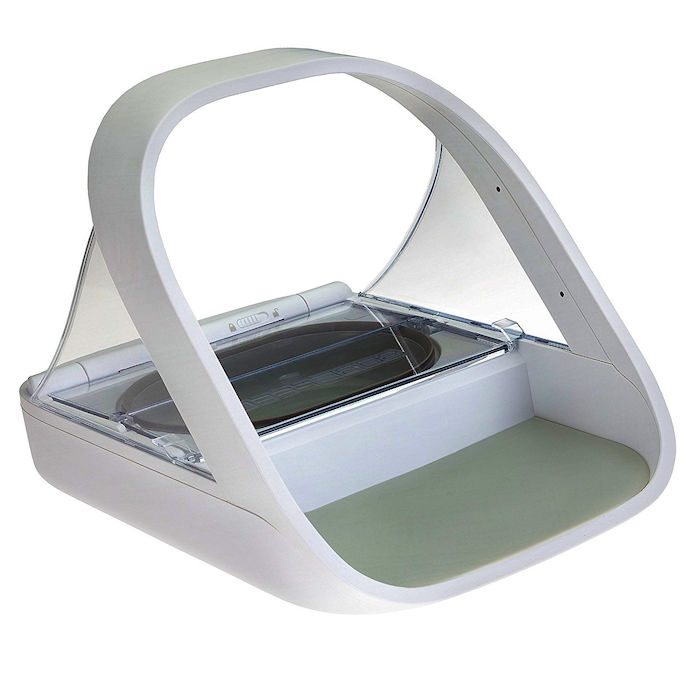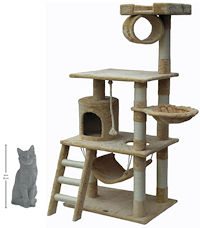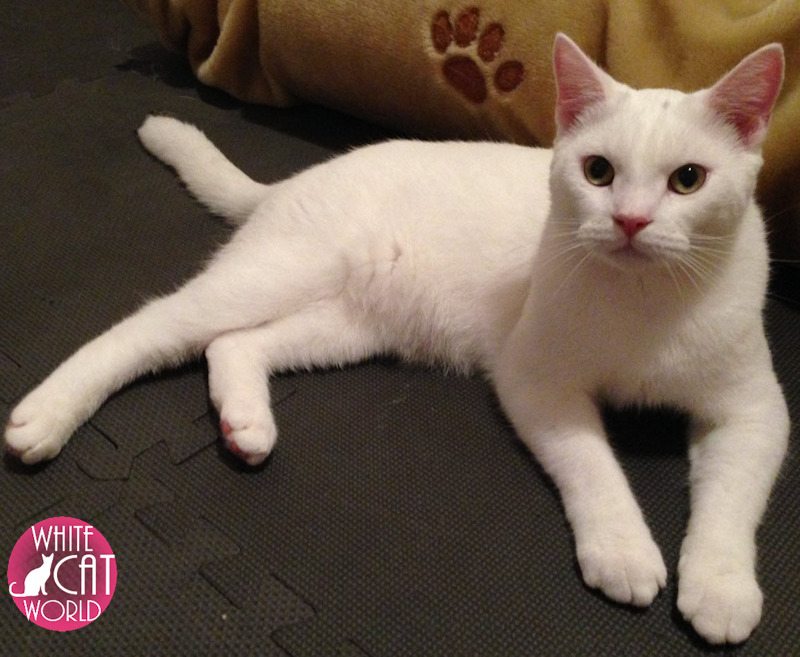 The domestic cat is one of the top three cleanest animals on the planet. Quite a number of people believe cats may actually be the most hygienic, since they are fond of bathing and spend considerable amount of time grooming themselves.
The domestic cat is one of the top three cleanest animals on the planet. Quite a number of people believe cats may actually be the most hygienic, since they are fond of bathing and spend considerable amount of time grooming themselves.
Unfortunately, no degree of self-maintenance can make a cat immune to all diseases. It is Mother Nature showing one of her most ignoble (or noble if you’re a strong believer in the “inevitable cycle of life” concept) eccentricities.
There are literally dozens of medical conditions that afflict cats. They range from mild (such as loss of hair), moderate (such as gingivitis), to severe (such as fatal cancer).
These illnesses pose a range of challenges to cat owners. Especially since domestic cats are famous for instinctively hiding their pain, weakness, or illness—a trait also found in wild cats. Thus, it is imperative that you have to be keenly observant of your cat to notice telling signs of health issues.
This article gives a comprehensive overview of SIX of the most common health conditions cats experience to give you a firm head start should the worst happen.
Cat Health Issues & Treatment
1. Cat Vomiting
Humans are not strangers to vomiting, sometimes self-induced because of excessive consumption of alcohol.
Still, we may be nauseous for several other reasons. And this is also true for cats. The underlying cause for vomiting may be as benign as eating an inedible substance or as serious as a pathogenic infection. Other common causes are urinary tract disease, hairballs, and diabetes.
How It Appears
Typically, when a cat vomits, you will find partially digested residues of food. The content may be in predigested form, in tubular shape, and often covered with slimy mucus or bile.
Sometimes, there may be traces of blood, which should be cause for great concern. As it is often a sure sign of a more serious underlying condition like ulcer or cancer.
In general, the symptoms are obvious. As vomiting is characterized by drooling and abdominal heaving.
The typical course of action when you notice your cat vomiting is to withhold food and water. Only administer either at least two hours after vomiting has stopped. When you do, introduce water first and slowly. After which you give the cat a bland diet.
Now would be a purr-fect time to pamper you cat (as you would a sick kid). And feed your cat with homemade food such as cooked, skinless chicken or boiled rice or potatoes.
If the symptoms and the vomiting continues (indicative of chronic vomiting), then make certain to see your vet. Although gross, it’d help to scoop a sample of the vomit for your vet. Your vet will recommend a treatment plan for your cat.
As tempting as it may appear, refrain from giving any drug (anti-emetic or not) to your cat unless so directed by your vet. For the sole reason that the causes of vomiting are varied and that only a licensed vet having carried out necessary checks and/or tests can prescribe an appropriate remedy.
2. Cat Diarrhea
While diarrhea can often be a standalone health problem in cats, it can sometimes accompany vomiting especially when the cause is gastrointestinal upset.
That said, the causative factors for diarrhea are numerous. It ranges from something as mild as change of diet to something as severe as liver disease. Other common causes are allergies, cancer, infection, parasites in the intestine, and spoiled food.
How It Appears
The typical symptom of diarrhea is frequent loose, liquid, or watery stool/feces. However, the duration varies as it may be a one-time occurrence, last for several weeks or months, or it may occur intermittently (off and on).
Treatment Options
One of the adverse effect that accompanies diarrhea is dehydration. To prevent it, it is necessary to provide a steady supply of fresh, clean water.
Water is the most you have to offer tho’. As it is essential to withhold fold for a while. However, this period should not last longer than 12 to 24 hours.
Now, a single bout of diarrhea shouldn’t make you lose sleep. However, you SHOULD visit a vet if the diarrhea persists for more than one day and/or you notice additional worrying symptoms (such as traces of blood, straining to defecate, abdominal discomfort, vomiting, abnormal amount of flatulence, lethargy, fever, unexplained weight loss, or loss of appetite).
3. Cat Eye Problems
This encompassing entry refers to a wide range of individual health conditions. The most common of these eye diseases include cataracts, trauma, conjunctivitis, inflammation of vital eye tissues, retinal disease, and viral infections.
How They Appear
There are plenty of symptoms indicative of eye diseases. And it can get tricky for anyone without expert knowledge to tie a symptom to a specific underlying health condition.
You can only be aware of the symptoms and watch out for them by physically inspecting the eyes of your cats REGULARLY.
The common symptoms include cloudiness or change in eye color, squinting, watery eyes, eye discharge, pawing at the eye, gunk in the corners of the eye, tear-stained fur, a visible third eyelid, and red or white eyelid linings.
Treatment Options
Early detection is important for any health issue. This is especially true for eye problems. You should make a habit of REGULARLY inspecting the eyes of your cat. Be fastidious when checking, and note any abnormalities.
You should also make certain that your cat gets necessary vaccinations and undergoes thorough checkups. This is just following the adage that an ounce of prevention is worth a pound of cure.
The course of action after discovering an abnormality is to reach out to your vet. Eye problems count as emergencies, so the earlier you make that call or visit, the better it is for your cat.
Do NOT administer any drops or ointments to your cat without prior vet approval. It could just make a bad situation worse.
How to Carry Out a Home Eye Check
- Ensure that the area in which you’re carrying the check is brightly lit
- Look intently into the eyes of your cat and note the following
- The eyes should be clear and bright
- The color of the area around the eyeball should be white
- The size of the pupils should be equal
- Using your thumb, gently roll down the eyelid of your cat, then observe the color of the lid’s lining
- The color should be pink. If the color is red or white, then it may be indicative of an underlying health problem.
4. Fleas
Fleas do not just have their cannons aimed at cats. Dogs, other domestic animals, and farm animals may also be at the receiving end of cannonballs from fleas. Even humans aren’t spared.
The flea game plan is having several species, with each of them having their preferred hosts. The common species are the human fleas (Pulex irritans), the dog fleas (Ctenocephalides canis), and the specie that prefers the tasty blood in your cat is the cat flea specie (Ctenocephalides felis).
How It Appears
The symptoms of flea infestation include the direct observation of tiny black dots (which are actually flea dirt on the skin of your cat) or the fleas themselves when you use a flea comb to inspect the coat of your cat.
Other indirect symptoms include hair loss, frequent and severe scratching and itching (pruritus), skin infections or hot spots, frequent licking, and red or irritated skin.
Treatment Options
Treatment of a flea break comes with the classic good and bad news. First the good news, flea infestation is one of the few kitty conditions that you can treat easily.
However, the bad news is that totally ridding your cat of fleas often requires consistent use of flea control products (it is not a one-time thing). And if your cat is often outdoors, then complete flea control can be really tough.
It is best to talk to you vet about the particular flea control option (there are several options) that would be best for your cat.
In addition, make certain to do a flea check regularly and using preventive products.
This is very important considering that the lifespan for a cat flea may extend to up to 12 months (one year), and anemia can be a serious adverse effect of a severe bout of flea infestation.
5. Tapeworms In Cats
Tapeworms are one of more than half a dozen parasitic worms that may infect cats.
Other parasitic nematodes include the heartworm (Dirofilariasis), lungworm, whipworm (Trichuriasis), hookworm (Ancylostomiasis), roundworm (Ascariasis),Physaloptera spp (Physalopterosis), and Ollulanus tricuspis (Ollulanis).
Furthermore, like fleas, tapeworms may infect cats, dogs, other domestic animals, farm animals, even humans (you know… the whole shebang).
Also, like fleas there are several Tapeworm (cestode) species. Except that there isn’t a specie specific to cats. Actually, four species typically infect cats (and dogs). They include the Taenia spp, Mesocestoides spp, Echinococcus multilocularis, and Dipylidium caninum.
All four of them call the small intestine home when they infect a cat. In general, tapeworms in cats are long, flat, and segmented. On average, their length range from 4 to 28 inches (0.3 to 2.3 feet). The standard medical term for a tapeworm infection is Cestodiasis.
How It Appears
How Cats Get Tapeworms
Cats acquire tapeworms by ingesting the larvae of a tapeworm. The primary source of the tapeworm larvae is an infected intermediate host, the most common being a flea. This explains why cats with flea infestation often also have cestodiasis.
Other intermediate hosts are infected rabbits, rodents, and birds (prey for cats). Additionally, cats may also acquire tapeworms by scavenging.
Symptoms of Cestodiasis
Recall that tapeworms are segmented nematodes. Therefore, as a tapeworm grows older segments of the tapeworm break off.
These older segments appear as small white worms, or as grains of white rice, sesame, or cucumber seeds. You would typically find these segments in the feces of the cat, around the anus of your cat, or in bedding.
Furthermore, these segments often stick out from your cats anus while it is relaxed or sleeping.
While these are telltale signs to establish the presence of tapeworms, other symptoms of tapeworm infection are weight loss and vomiting. Additionally, cats may lick or bite their anus, or drag their hind end across the floor in response to the itching.
Treatment Options
There are two vital commandments to adhere to regarding the treatment of a tapeworm infection.
- Ensure that you tackle any flea problems your cat experiences before taking any curative medication to eradicate tapeworms. This is because cats majorly get tapeworms from ingesting an infected flea.
- It is important that you eliminate tapeworms as some of the species that infect cats may also infect humans
Endeavor to visit your vet for a thorough physical evaluation of your cat. The vet would also recommend a suitable medication for treating the tapeworm infection. The typical treatment options for cestodiasis are oral or topical medications and injections.
6. Feline Lower Urinary Tract Diseases (FLUTD)

“If human lives be,
for their very brevity, sweet,
then beast lives are sweeter still…”
– Isobelle Carmody
[Idiopathic] Feline Lower Urinary Tract Diseases (iFLUTD or FLUTD) are a collection of feline diseases (or symptoms) that often have multiple possible causes. Typically, these diseases affect the lower urinary system comprising the bladder and urethra (the tube that connects the bladder—where urine is stored before urinating—to the outside world).
As a result, the adverse effects of these diseases are often:
- Preventing the bladder from emptying correctly
- Fatal blockage of the urethra
That said, male and female cats might suffer from FLUTD. Although male cats are generally more susceptible to urethral blockages because their urethras are narrow.
Furthermore, the typical age range for the occurrence of FLUTD is one to four years. Cats aged below one year or above 10 years rarely have iFLUTD.
Causes
As indicated above, the possible causes of FLUTD are numerous. Some of them are spinal cord problem; urethral plug; stress; bladder infection or inflammation; congenital abnormality; accumulation of crystals, stones, or debris in the urethra or bladder.
Additionally, endocrine health conditions such as diabetes mellitus and hyperthyroidism may cause lower urinary tract issues in cats.
How It Appears
Some of the common symptoms of FLUTD include lethargy, vomiting, bloody or cloudy urine, lack of appetite, crying when urinating, straining to urinate, licking around the urinary area (in a last ditch effort to alleviate the pain), and loss of bladder control.
Treatment Options
You MUST take your cat to your vet if you notice that your cat can’t urinate or if you suspect that your cat has a urinary tract problem.
This is because only a vet can holistically carry out thorough diagnosis (which often includes a physical exam, urinalysis, possible urine culture, blood chemistry tests, and X-ray or ultrasound).
Sometimes, the vet may not identify the cause of the symptoms. In which case the cat is considered to have bladder inflammation (cystitis).
Nothing the complexity of the differential diagnosis, it is vital to use ONLY medications recommended by your vet.
Another chilling reason why you should treat your cat’s urinary difficulties as an emergency is because it could be fatal if left untreated (as it may lead to partial or complete obstruction of the urethra that may in turn cause a kidney failure and/or rupture of the bladder.
Typically, cats with FLUTD are treated on an outpatient basis. However, brief hospitalization or full-on hospitalization may become necessary for diagnostic evaluation or if the urethra of your cat is blocked respectively.











Leave a Reply
You must be logged in to post a comment.